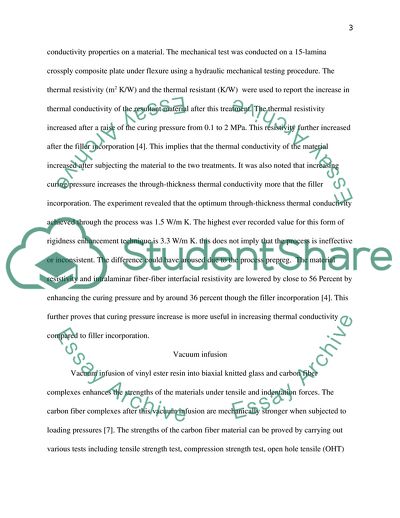Cite this document
(Comparing Rigidising Methods Using Re Enforced Material Coursework Example | Topics and Well Written Essays - 2000 words, n.d.)
Comparing Rigidising Methods Using Re Enforced Material Coursework Example | Topics and Well Written Essays - 2000 words. https://studentshare.org/engineering-and-construction/1772980-compare-rigidising-methods-using-re-enforced-material-carbon-fibres-and-glass-fibres-embedded-in-polymers-material-to-increase-payload-capability-you-have-to-present-figures-numerical-facts-and-graphs-and-compare-their-electricity-properties-as-well
Comparing Rigidising Methods Using Re Enforced Material Coursework Example | Topics and Well Written Essays - 2000 words. https://studentshare.org/engineering-and-construction/1772980-compare-rigidising-methods-using-re-enforced-material-carbon-fibres-and-glass-fibres-embedded-in-polymers-material-to-increase-payload-capability-you-have-to-present-figures-numerical-facts-and-graphs-and-compare-their-electricity-properties-as-well
(Comparing Rigidising Methods Using Re Enforced Material Coursework Example | Topics and Well Written Essays - 2000 Words)
Comparing Rigidising Methods Using Re Enforced Material Coursework Example | Topics and Well Written Essays - 2000 Words. https://studentshare.org/engineering-and-construction/1772980-compare-rigidising-methods-using-re-enforced-material-carbon-fibres-and-glass-fibres-embedded-in-polymers-material-to-increase-payload-capability-you-have-to-present-figures-numerical-facts-and-graphs-and-compare-their-electricity-properties-as-well.
Comparing Rigidising Methods Using Re Enforced Material Coursework Example | Topics and Well Written Essays - 2000 Words. https://studentshare.org/engineering-and-construction/1772980-compare-rigidising-methods-using-re-enforced-material-carbon-fibres-and-glass-fibres-embedded-in-polymers-material-to-increase-payload-capability-you-have-to-present-figures-numerical-facts-and-graphs-and-compare-their-electricity-properties-as-well.
“Comparing Rigidising Methods Using Re Enforced Material Coursework Example | Topics and Well Written Essays - 2000 Words”. https://studentshare.org/engineering-and-construction/1772980-compare-rigidising-methods-using-re-enforced-material-carbon-fibres-and-glass-fibres-embedded-in-polymers-material-to-increase-payload-capability-you-have-to-present-figures-numerical-facts-and-graphs-and-compare-their-electricity-properties-as-well.


